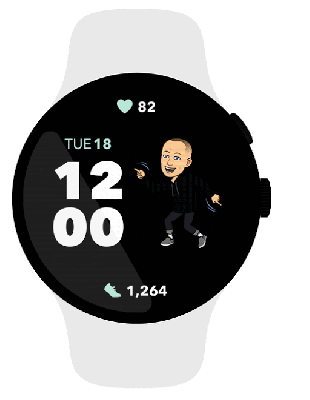For years, Wear OS has been, at best, something of a dark horse among Google operating systems. It’s certainly not for lack of partnership or investment, but for whatever reason, the company has never really stuck the landing with its wearable operating system.
It’s a category in which Apple has been utterly dominant for some time. Google has largely failed to chip away at that market, in spite of enlisting some of the biggest names in consumer electronics as partners. Figures from Strategy Analytics classify Wear OS among the “others” category.
Google’s strategy is, once again, the result of partnerships — or, more precisely, partnerships combined with acquisitions. At the top of the list is an “if you can’t beat ’em, join ’em” approach to Samsung’s longstanding preference for open-source Tizen. It seemed like one of the stranger plays in the category, but building out its own version of Tizen has proven a winning strategy for the company, which trails only Apple in the category.
During today’s I/O keynote, the company revealed a new partnership with Samsung, “combining the best of Wear OS and Tizen.” We’re still waiting to see how that will play out, but it will be fascinating watching two big players combine forces to take on Apple. You come at the king, you best not miss, to quote a popular prestigious television program. On the developer side, this seems to allude to the ability to create joint apps for both platforms, as third-party app selection has been a sticking point for both.
The other big change sheds some more light on precisely why the company was interested in Fitbit. Sure the company was a wearables leader that dominated fitness bands and eventually created its own solid smartwatches (courtesy of, among other things, its own acquisition of Pebble), but health is really the key here.
Image Credits: Google
Health monitoring has become the dominant conversation around wearables in recent years, and Google’s acquisition seems to be, above all, about integrating that information. “[A] world-class health and fitness service from Fitbit is coming to the platform,” the company noted. Beyond adding Fitbit’s well-loved tracking features, the company will also be integrating Wear features into Google’s hardware, working to blur the line between the two companies.
“Health and fitness tracking is essential for wearables,” Google notes in a blog post. “With the latest Wear update, we welcome Fitbit’s many years of health expertise to the experience. The best of Fitbit, including features like tracking your health progress throughout your day and on-wrist goal celebrations, will motivate you on your journey to better health.”
The consumer-facing experience has been revamped here, as well. Apps like Calm, Sleep Cycle and Flo are getting their own tiles, while shortcuts are now accessible from anywhere. A number of Google’s own apps are getting a refresh, as well, including Maps, Assistant and Pay, the latter of which is rolling out to an additional 26 countries — adding to the 11 currently available. Later this year, the company will also be introducing a Watch version of the YouTube Music app.
The aforementioned updates are set to arrive later this year.

